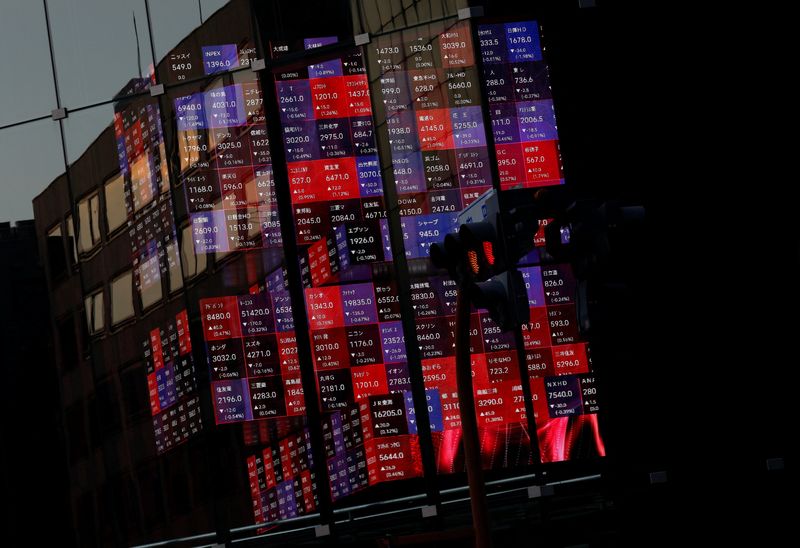By Jamie McGeever
(Reuters) - A look at the day ahead in Asian markets from Jamie McGeever.
Japanese GDP and Indian wholesale inflation provide investors in Asia with a couple of appetizers on Tuesday, before markets feast on the main course later in the day - U.S. inflation.
Japan's economy is expected to have grown at an annualized 2.0% pace in October-December, following a 0.8% contraction in July-September, according to a Reuters poll of economists.
Japan's Q4 growth figures come at a crucial juncture, just weeks before Bank of Japan Governor Haruhiko Kuroda steps down. Investors are grappling with the possibility that Kuroda's ultra-loose policy will end when he goes.
(Japan GDP https://fingfx.thomsonreuters.com/gfx/mkt/egpbyagmrvq/JapanGDP.jpg)
Kazuo Ueda, a 71-year-old academic and former BOJ policymaker, is tipped to succeed Kuroda. Investors took this as a sign BOJ policy will turn hawkish and the yen rose sharply late last week, but have since cooled these bets.
Bracing for a major policy shift, BlackRock (NYSE:BLK), the world's largest asset manager, on Monday downgraded their Japanese equity exposure to underweight.
"Regardless of who takes over, we think the wage and inflation dynamics at play mean the current policy stance has likely run its course," BlackRock said.
Having risen for five weeks in a row, its best run since 2020, Japan's Nikkei may be poised for a correction. On Monday it fell 0.9%, its biggest one-day fall in four weeks.
Indian wholesale inflation, meanwhile, is expected to have eased in January to an annual 4.54% from 4.95% in December.
But investors should be prepared for surprises.
India's January consumer inflation, published on Monday, was a blow-out 6.52%, significantly higher than the consensus forecast of 5.90% and back above the central bank's tolerance level. It was also higher than every one of the 44 predictions in a Reuters poll of economists.
(India inflation https://fingfx.thomsonreuters.com/gfx/mkt/zgvobkerqpd/IndiaCPI.jpg)
Overshadowing all that is the January U.S. inflation. Uncertainty surrounding the data is running deeper than usual after revisions last week to December's figures, and if investors are expecting a surprise it is on the hawkish side.
U.S. rate futures markets are now pricing in a 2023 terminal rate of 5.25% - a new high - and no longer expect a rate cut later this year. It's remarkable - only two weeks ago, 50 basis points of easing was priced in for the second half of the year, and now, almost nothing.
Here are three key developments that could provide more direction to markets on Tuesday:
- Japan GDP (Q4)

- India wholesale inflation (January)
- U.S. consumer price inflation (January)
(By Jamie McGeever)